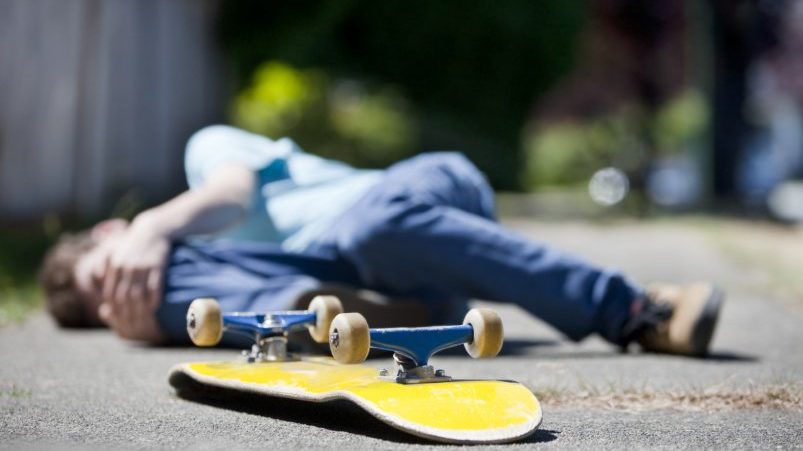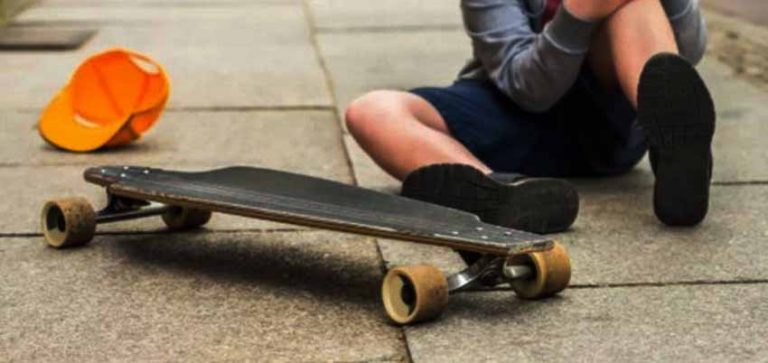In a word, maybe. The truth is that no one knows for sure is skateboarding bad for your knees. There are several studies out there on the subject, but they did not consider various factors that might influence their conclusions.
Check: JBM Adult&Child Elbow/Knee Pads for Skateboarding Roller Skating
Some experts claim that “skateboarding leads to knee injuries,”. While others suggest that skateboarders have more muscular legs and better balance than non-skateboarders.
How do you make sense of all this contradictory information? To get a clear picture of whether or not skating is bad for your knees. Let’s break it down into individual issues,
the knee’s anatomy, facts from research studies, and quotes from experts in related fields. Common knowledge about injuries and traumatic knee injuries, the biomechanics of skateboarding, and what you can do to minimize your risk.
The Anatomy of Your Knee
Your knee is a complex structure with multiple bones, ligaments, tendons, and cartilages all held together with muscles and fascia. It forms a hinge joint between the lower leg bone (tibia) and upper leg bone (femur). The femur is thickest at the connection to the hip.
At the same time, its opposite end that connects to the tibia is thin. This creates a strong lever arm for the quadriceps muscle group on one side of your body as it attaches from near where your hip creases into your pelvis and then down along the femur.
Your patella, or kneecap, sits at the front of your knee, acting as a bumper guard. It also plays a crucial role in helping to rotate your femur inward and outward when you bend and straighten your leg.
For this rotation to happen smoothly, there has to be a balance. The muscles pull on either side of the joint. This is where skating comes into play, and one can decide skateboarding is bad for your knee.

Skateboarding can put more force on your knees than just any other kind of physical activity, including running. Because it puts a lot of twisting stress on them when bent during each turn.
If you already have knee problems such as arthritis or past injuries. Skateboarding may make them worse because it strains all the structures in and around your knee.
If you want to skate, it’s a good idea to closely monitor your knees for any pain or discomfort and stop if anything seems amiss.
In formal Evidence: Will Skateboarding Harm my Knee?
As far as anecdotal evidence goes, there is an abundance of opinions supporting both sides of the argument. Many people claim they have never had problems with their knees from skateboarding.
While there are also plenty who will tell stories about how skating wrecked their knees and ended their careers as skaters prematurely.
The latter group points out that you only need to watch footage of pro skater Stevie Williams’ recent battle with severe osteoporosis.
Sprained Knee vs Fractured Knee vs Dislocated Knee
Three types of knee injuries are common in skateboarding: sprain, fracture, and dislocation.
Sprains occur when there is damage to the ligaments around the joint, while fractures involve a crack or break in one or more of the bones.
A dislocation occurs when the head of your femur pops out of the socket, the end of your thigh bone when you bend or straighten your leg.
It’s important to know that not all fractures are created equal. There are significant differences between minor fractures that can heal naturally versus severe ones which require surgery.
Because they may have damaged nearby tissues, including nerves, blood vessels, and tendons. Dislocations also have a spectrum of severity, with some able to be popped back into place without medical help while others require a doctor.
Another argument often heard is that skaters with knee injuries usually blame them for their skating when they result from overuse of running or jumping sports.
There may be truth to this because it’s common for people to sprain. An ankle, wrist, or shoulder after tripping, or falling during a run or game of basketball. But not so much after playing skateboarding, even though many skaters do both.
The reason is pretty apparent: you fall more frequently while riding your board than when participating in other activities.
It’s not just about simple physics – people who have had bad accidents on boards can attest to its unpredictability and how it requires balance and control that also decides whether skateboarding is bad for your knee.
Diagnosis and Treatment of Skateboarding Injuries
Injuries from skateboarding are common, sometimes severe, and usually athletic tape or a brace will be used for treatment.
This kind of injury is widely seen but not always treated properly. There are several different types of damage that borders could suffer from, but the most common would be strains and sprains along with fractures. This article will cover how to diagnose and treat these injuries properly.

When diagnosing the injury, it is essential to look, feel and test for specific things. For example, if there are any signs of bruising or swelling, this could be a sign of a fracture, possible compression fractures which are very serious. Bruising can sometimes happen without a fracture.
Treatment:
Proper shoes and orthotic inserts are an adequate treatment for almost any injury.
Conclusion:
There are different types of problems that skateboarders have in their daily life. There are also other types of strains which include muscle strain, tendon strain, and ligament sprain. It is always best to consult with a physician before taking any medication or supplement.
The answer to the Is skateboarding bad for your knees? It remains unanswered, and that varies from person to person but if you get any injury, make sure to treat it properly on time.
Treatment after an injury depends on the degree of damage, the doctor may suggest.




